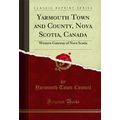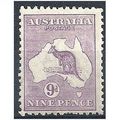Christchurch Priory, Dorset - artist Quinton (930) unusual textured effect 1924
- Condition : Used
- Dispatch : 2 Days
- Brand : None
- ID# : 128784760
- Quantity : 1 item
- Views : 565
- Location : United Kingdom

- Seller : justthebook (+1703)
- Barcode : None
- Start : Sat 07 Jun 2014 23:26:36 (BST)
- Close : Run Until Sold
- Remain : Run Until Sold
More Listings from This Seller view all
Seller's Description
- Postcard
- Picture / Image: Christchurch Priory, Dorset - artist postcard by AR Quinton - this has a more unusual thick textured painting-like effect that I have not seen on other Quinton cards.
- Publisher: J Salmon (no. 930)
- Postally used: yes
- Stamp: George V half d. green x 2
- Postmark(s): Bournemouth 19 June 1924 British Empire Exhibition slogan postmark
- Sent to: Miss Freda Terry, Dover House, 60 Waterloo Road, Blackpool
- Notes / condition:
Please ask if you need any other information and I will do the best I can to answer.
Image may be low res for illustrative purposes - if you need a higher definition image then please contact me and I may be able to send one.
------------------------------------------------
Postage & Packing:
Postage and packing charge should be showing for your location (contact if not sure).
No additional charges for more than one postcard. You can buy as many postcards from me as you like and you will just pay the fee above once. (If buying postcards with other things such as books, please contact or wait for invoice before paying).
Payment Methods:
UK - PayPal, Cheque (from UK bank) or postal order
Outside UK: PayPal ONLY (unless otherwise stated) please. NO non-UK currency checks or money orders (sorry).
NOTE: All postcards are sent in brand new stiffened envelopes which I have bought for the task. These are specially made to protect postcards and you may be able to re-use them. In addition there are other costs to sending so the above charge is not just for the stamp!
I will give a full refund if you are not fully satisfied with the postcard.
----------------------------------------------
Text from the free encyclopedia WIKIPEDIA may appear below to give a little background information (internal links may not work) :
*************
Christchurch Priory is an ecclesiastical parish and former priory church in Christchurch in the English county of Dorset (formerly in Hampshire). Christchurch Priory has been described in the 21st century by a broadsheet as 'the least appreciated of the Great Churches of England', referring to its membership as one of 32 churches to have met eligibility for the Greater Churches Group. It is the longest parish church in the country and is larger than 21 English Anglican Cathedrals.
The story of Christchurch Priory goes back to at least the middle of the 11th century, as Domesday says there was a priory of 24 secular canons here in the reign of Edward the Confessor. The Priory is on the site of an earlier church dating from 800AD.[1] In 1094 a chief minister of William II, Ranulf Flambard, then Dean of Twynham, began the building of a church. Local legend has it that Flambard originally intended the church to be built on top of nearby St. Catherines Hill but, during the night, all the building materials were mysteriously transported to the site of the present priory.[2] Although in 1099 Flambard was appointed Bishop of Durham, work continued under his successors, and by about 1150 there was a basic Norman church consisting of a nave, a central tower and a quire extending eastwards from the crossing. It was during this period that another legend originated, that of the miraculous beam, which was to change the name of the town from Twynham to the present day Christchurch.
The choir at the priory consists of a boys choir, a girls choir, and a men's choir. The standard of music at the priory is truly wonderful, singing at all religious festivals. The ranks for the boys choir goes like this: probationer - full choir member (given surplice) - light blue medal - dark blue medal - red medal - deputy (green medal) - head boy (green medal).
In 1150 Baldwin de Redvers, Lord of the Manor of Christchurch and Earl of Devon replaced the secular minster with an Augustinian priory. The de Redvers continued in their patronage of the priory for 150 years, until in 1293, Isabella de Fortibus, Countess of Devon, (the last of the de Redvers line) sold her eastern estates to Edward I for about £4000. By this action, Christchurch became a Royal Manor which meant that in 1303 it was required to provide and man a ship to aid the King's campaign against Scotland.
In 1330 Baron William de Montacute was granted the manor by Edward III and thus became the 1st Earl of Salisbury (Second Creation).
In the 13th century there was a frenzy of building: the nave aisles were vaulted, the clerestory was built, the Montacute Chapels replaced the Norman apse in the north transept and work began on the North Porch, notable for its unusually large size. One of the chapels became the Church of St. Thomas the Apostle, although the current building mostly dates from the 18th century.
Although there is no documentary evidence relating to a central tower, the massive piers and arches at the corners of the transepts seem to indicate provision was made for one. A central tower would have been consistent with a Norman conventual church.[3]
Work continued in the 14th century. The nave roof reached its present height no later than 1350 and towards the end of the 14th century work on the Lady Chapel was started. It was completed in the early 15th century and its pendant vaulting is thought to be the first of its kind in England. Also in the 15th century, the original quire was replaced and extended so that it joined onto the new Lady Chapel. This may have been as a result of the Norman tower collapsing, but this is not certain. What is certain is that the tower was rebuilt between 1470 and 1480. The Draper and Salisbury chantry chapels were completed by 1529. By this time, the church looked much as it does today.
Much of what is known about Christchurch between the Norman Conquest and the mid-14th century comes from the Christchurch Priory Cartulary, which contains copies over 1,300 of the monastery’s most important documents. Most of it was written by just two clerks, one completing more than half before a second concluded the task in 1372. Further amendments and updates were added in the following decades.
The existence of the cartulary in the Priory library was recorded by John Leland shortly before the Dissolution, but its whereabouts in the decades after 1539 are uncertain. Almost a century later it was in the library of Sir Robert Cotton, a notable collector of medieval manuscripts. In 1753 the Cotton library collection was acquired by the newly founded British Museum, but the Christchurch Priory Cartulary was thought lost until it was discovered in an old cupboard in a garret of the Museum in 1837. It is today held in the British Library, where it is still catalogued by Sir Robert Cotton's filing system: Cotton MS Tiberius D.vi.
Efforts to translate the whole Cartulary began in the late 20th century, but not until 2007 was this task completed by Katharine Hanna and published by Hampshire County Council.[4]
The legend of the miraculous beam dates to the early 12th century. The story is that a beam was found to have been cut too short when it was hoisted into place. This would have been embarrassing for the carpenters since the wood was expensive and would be difficult to replace. There was however a mysterious carpenter who had worked and eaten alone. The day following the discovery, when the carpenters returned they found the beam was in place and it now fitted. The unknown carpenter was never seen again, and the story came to be that it was Jesus Christ who had intervened. The church became Christ’s Church of Twynham in commemoration of the event.[5] In time the town became Twynham-Christchurch and eventually shortened to Christchurch. The beam can be seen today and is located in the Priory’s Ambulatory.
type=printed postcards
theme=topographical: british
sub-theme=england
county/ country=dorset
number of items=single
period=inter-war (1918 - 1939)
postage condition=posted
Listing Information
| Listing Type | Gallery Listing |
| Listing ID# | 128784760 |
| Start Time | Sat 07 Jun 2014 23:26:36 (BST) |
| Close Time | Run Until Sold |
| Starting Bid | Fixed Price (no bidding) |
| Item Condition | Used |
| Bids | 0 |
| Views | 565 |
| Dispatch Time | 2 Days |
| Quantity | 1 |
| Location | United Kingdom |
| Auto Extend | No |




 for 1 item(s)
for 1 item(s)

















